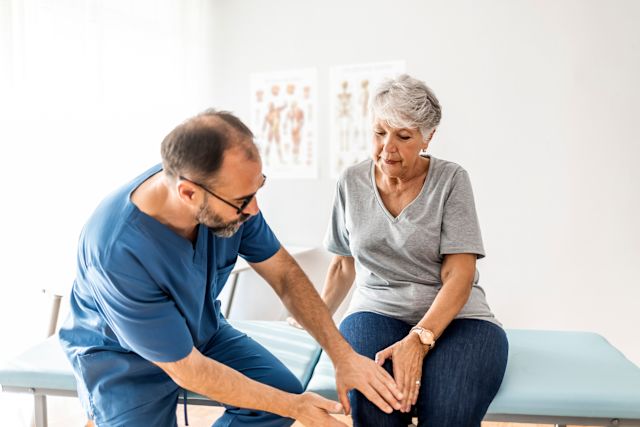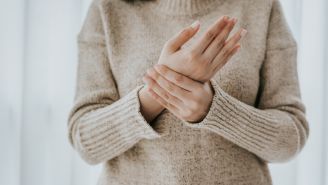If you’re one of the 32.5 million Americans with osteoarthritis, you’re probably already taking steps to ease your joint pain and stiffness. But you may have one more thing to watch out for: bone fractures.
Osteoarthritis (not to be confused with osteoporosis, a condition characterized by weak and brittle bones) is a common form of arthritis. People with osteoarthritis have joint pain and can begin to lose function in the affected area.
There are two types of osteoarthritis, primary and secondary. Primary osteoarthritis is more common and may occur due to risk factors such as increased age, obesity, injury, or being biologically female. Secondary osteoarthritis is less common and is associated with joint disorders or other preexisting conditions.
Understanding the link between osteoarthritis and fractures
In a study of over 250,000 adults with and without osteoarthritis, people with osteoarthritis had a 55 percent increased chance of bone fracture compared to those without osteoarthritis over 10 years of follow-up. According to the study, published in 2021 in the journal Osteoarthritis and Cartilage, the risk for fracture was significantly higher across the board for people with osteoarthritis, regardless of age, sex, or type of osteoarthritis.
Another study, published in 2014 in the same journal, indicated a similarly higher risk. The study found that among people over 45 years old with osteoarthritis, those who were biologically female had a 50 percent higher risk of suffering a fracture than those without osteoarthritis.
Why does having osteoarthritis put you at a higher risk for fracture—and higher still if you’re older than 45 and biologically female?
There may be a variety of factors at play, such as changes in estrogen levels as people age. Drops in estrogen over time are associated with bone loss and weakness, making the bones more fragile.
Researchers also think falls may be a factor. People with osteoarthritis are at increased risk of falling, likely because joint pain and stiffness make them less mobile, causing them to lose strength and balance. People with osteoarthritis may also start out with higher bone density, but they tend to lose it more quickly as they age. Their bones can have certain weaknesses that a bone density scan can’t easily see.
How to prevent broken bones
If you have osteoarthritis, try these strategies to decrease your chance of fractures.
Be assessed for fall risk
Talk to your healthcare provider (HCP) about evaluating your chances of falling, taking into account your existing health conditions. Use the assessment to guide your preventive steps, such as organizing your home to help reduce the risk of falls.
Stay active
Gentle exercise, such as swimming, walking or yoga, can maintain your strength and flexibility and help ward off bone loss. But be sure to consult your HCP before you start a fitness routine, especially if you already have osteoarthritis.
Get adequate sleep
People who are tired are at an increased risk of falling. Adults aged 25 to 64 should aim for seven to nine hours of sleep each night; older adults should shoot for seven to eight hours.
Have your eyes and ears tested
Changes in vision or hearing can affect your ability to detect warnings or spot potentially hazardous obstacles. Always make sure you wear your glasses, contact lenses, or hearing aids when you need them.
Check medication side effects
Some drugs may cause you to feel dizzy or sleepy, which could affect your balance.







